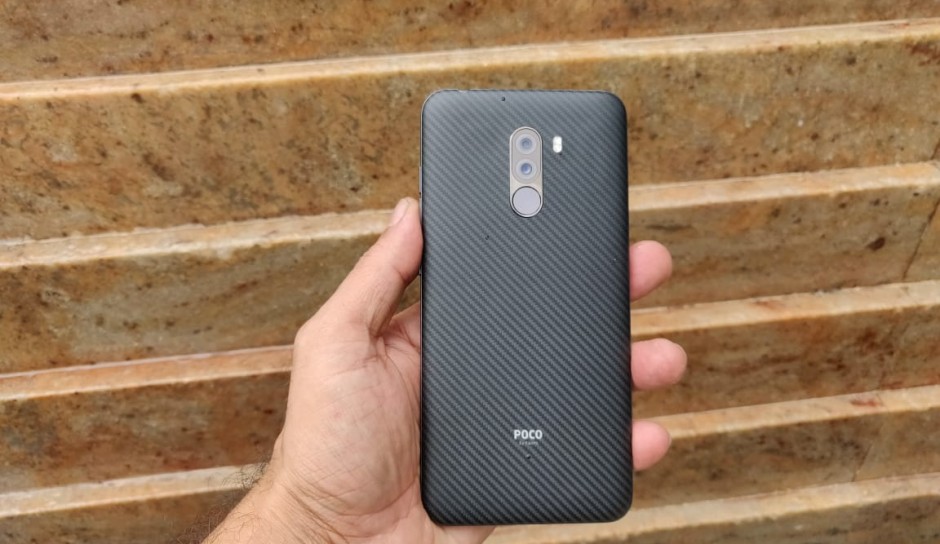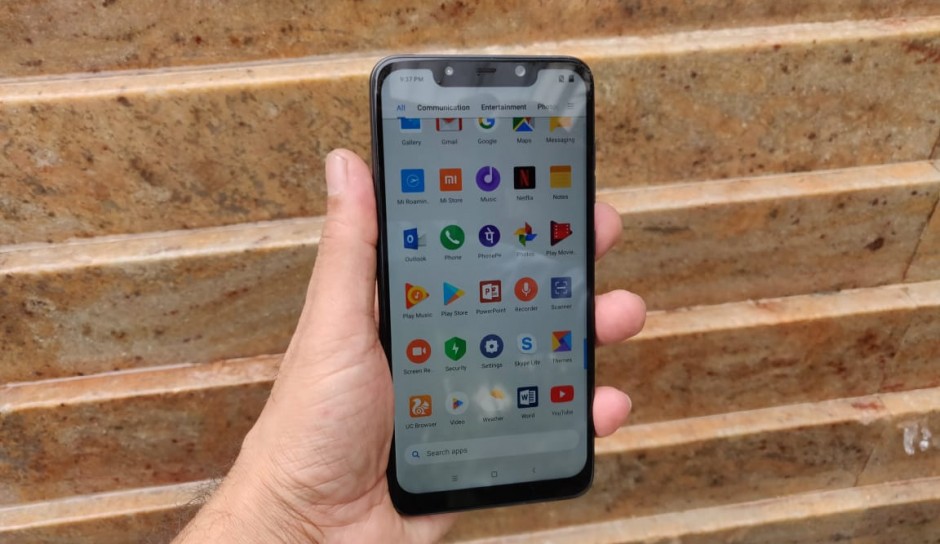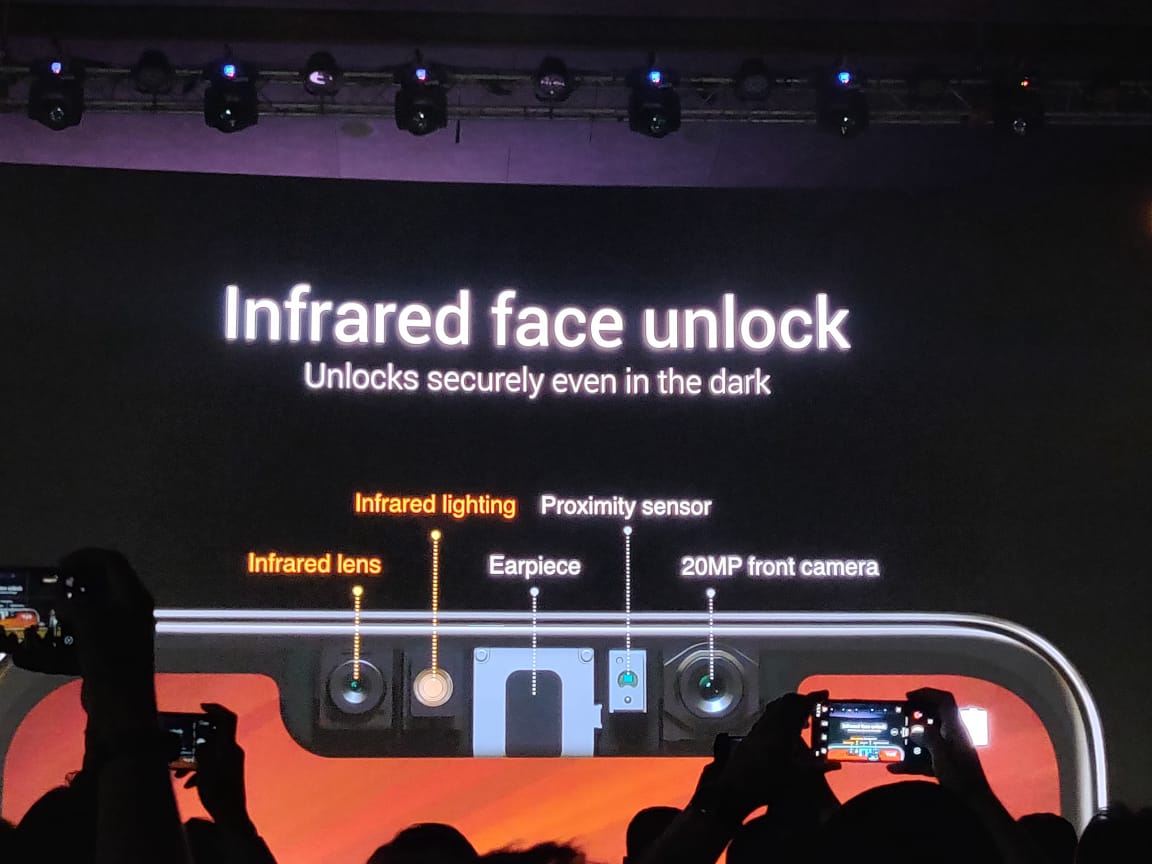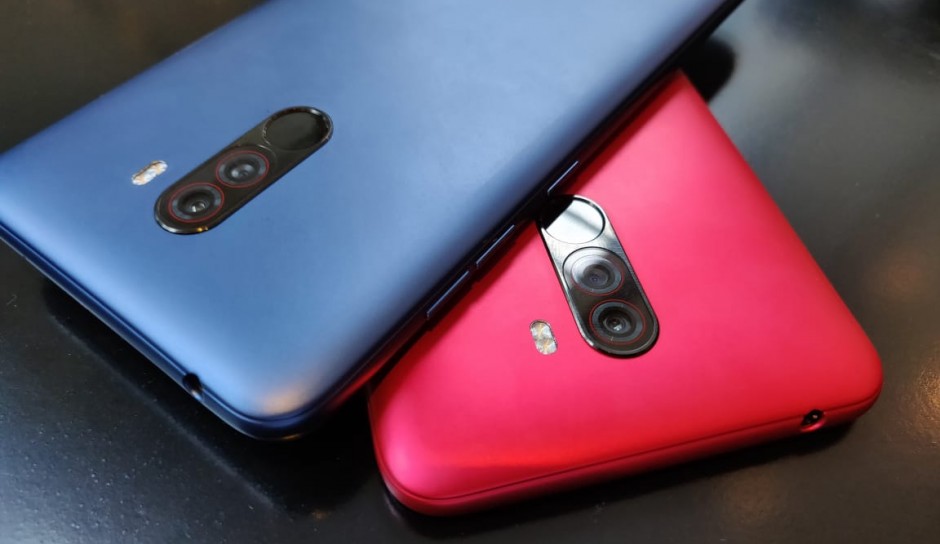When Xiaomi said it’ll make the cheapest handset with a Snapdragon 845, little did we know that its new Poco brand will further diversify its already value-for-money portfolio. The Chinese manufacturer today unveiled the Poco F1 at a flash event in New Delhi and announced four variants of the smartphone, which is primarily powered by industry’s top-of-the-line Snapdragon 845 chip.
With a base configuration of 6GB RAM and 64GB storage, the Poco F1 gives direct competition to the OnePlus 6 and the more recent Asus Zenfone 5Z, both of which come at an upward of Rs 30k price. The Poco F1, however, will retail for Rs 20,999 thus bringing us to the most question – Does the Poco F1 kill the competition for all ‘flagship killers’? Let’s talk about that.
Design & Build:
When various OEMs are looking to fuse in different proportions of glass and metal on their smartphones, Xiaomi’s sister brand Poco has gone with polycarbonate-made back panels, the same kind which adored the last generation of Nokia Lumia phones and even the older Moto G series. While polycarbonate doesn’t necessarily strike you as the most durable option like Xiaomi’s more budget phones with a metal back, the same doesn’t instil the fear of dropping a glass-back device that brings with it dust and fingerprint smudges. And need we remind, that for those who are concerned, Poco is providing a special edition Kevlar finish which it says is more durable than metal. The lack of metal makes the phone lightweight which is what we’ve come to expect from a flagship and Poco is also providing a silicone case to ease up in case of drops ( though we will not recommend using it as it spoils the look).

The OnePlus 6 and Zenfone 5Z have gone the same route which is a shiny glass sandwich design adhered to an aluminium frame. Both of the back come in several colour combinations – Meteor Silver and Midnight Blue for the 5Z and Mirror Black, Midnight Black, Red and Silk White. While OnePlus offers a glossy finish, Asus’ glass offers an X-like mirror reflection at the back. The finish might be elegant for some but it’ll last to the point when either of the devices gets dropped, after which you’ll have to suffice bypaying half a fortune to get that glass back replaced.
Winner: Poco F1 for being more durable than glass.
Display:
The OnePlus 6 sports a 6.28-inch Optic AMOLED FHD+ screen (1080 x 2280 pixels) on the front of the OnePlus 6. It comes with rounded corners, minimum bezels and a notch at the top which extend the screen-to-body ratio to 83.8 percent. The notch on the front employs acamera, ambient light, earpiece, and proximity sensors, along withnotification LED.
The Zenfone 5z features a slightly smaller 6.2-inch full-HD+ LCD screen with an iPhone X-like notch and a resolution of 1080×2246 pixels. The screen covers 95% of DCI-P3 colour gamut with 83.6 percent screen-to-body ratio that spans on an elongated 18.7:9 aspect ratio on the front. While seemingly reducing the presence of bezels on the edges and at the top, the 5z even has a smaller notch than the iPhone X and thus ticks all the boxes for a high-end smartphone of 2018.

The Xiaomi Poco F1 features a 6.18-inch Full HD+ display with a resolution of 2246 x 1080 pixels and 19:9 aspect ratio. There’s a notch at the top because of which the screen-to-body ratio is well over 82 percent. The screen offers a high 500nits brightness and a Pixel density of 403 ppi which is the same as the other two but at a lower price.
Winner: Poco F1
Hardware:
All three devices in the list are powered by the same flagship Qualcomm octa-core Snapdragon 845 Chipset clocked at a maximum of 2.8GHz with Adreno 630 graphics. The base variant of all three feature 6GB of RAM and 64GB storage which goes all the way up to 8GB RAM and 256GB storage on the Poco F1 and Zenfone 5Z, while the OnePlus 6 maxes out at 128GB.

Additionally, the Poco F1 comes with LiquidCool Technology that helps tone down the heat that will be generated when playing graphics-intensive games. As an added security feature, the Poco phone features 3D face unlocking which is helped by the large front camera, an Infrared sensor and infrared lighting, that makes it possible for the device to read a face in the dark.
For everything else, the mid-range flagships balance sheets with similar hardware features like WiFi, Bluetooth 5.0 LE, GPS, GLONASS and USB Type-C for charging. All three phones also equip a fingerprint sensor at the rear end, so none of them is missing out on any biometric features.
Winner: Poco F1, for being equally powerful as the other two at a lower price.
Software:
The OnePlus 6 offers a near-to-stock Android Oreo experience with regular updates as well as a clutter-free home screen. Users can replace the stock on-screen buttons for gesture navigation that works a lot like the one on the iPhone X. Although not as stable and smooth like on the Apple device, the gestures on the OP6 are decent.
With ZenUI 5.0, the Zenfone 5Z ‘almost’ offers a stock version of Android which is based on Android 8.1 Oreo and has minimum bloatware. There are gestures for navigation and AI features like AI Boost for reassuring more power when using the smartphone for extreme gaming scenarios, AI Photography, AI Display and AI Ringtone with ZeniMoji which is Asus’ version of Apple Animoji.
The Poco F1 comes running Android 8.1 Oreo with Xiaomi’s MIUI overlay but a new Poco Launcher to look forward to. For the first time on an MIUI-running device, there’s an App launcher which behaves a lot like the Nova launcher but has its own finishing touches like different categories of apps and grouping apps on the basis of their icon colours. Very intuitive, familiar and lesser learning curve to get through and an update to MIUI 10 and Android Pie don’t seem like a far fetched idea either.
Winner: OnePlus 6 and Zenfone 5Z for providing an almost Stock Android experience.
Camera:
OnePlus 6
The OnePlus 6 has a dual camera setup with a 16MP lens that features optical image stabilization and f/1.7 Aperture alongside a secondary 20MP camera with the same fixed aperture. Both Sensors are placed vertically adjacent to each other with a dual-LED flash below the camera module.
The Portrait mode offers a ton of detail and a smoother transition from subject to the background, which is blurred with a satisfactorily good amount of depth of field. The camera being the best of all OnePlus phones is a solid performer in producing the right colour saturation, balance, sharpness and dynamic range. In terms of videography, the device will be able to record 4K videos at 60 fps, 1080p videos at 240 FPS and slow-motion videos of 720p resolution at 480 fps.
Poco F1
The camera on the Poco F1 sports a combination of 12-megapixel primary Sony IMX363 sensor with dual pixel autofocus, 1.4μm pixel size and a 5-megapixel secondary Samsung sensor on the rear side. For the front, the device has a 20-megapixel selfie camera along with support for IR face unlock feature. Pictures on good lighting conditions turn out to feature an abundance in detail and the saturation isn’t so bad either and if you weren’t wary enough, you might as well mistake it for the OnePlus 6.

Of course, there’s AI enabled on the camera interface which identifies scenes and tweaks the settings to make pictures look good. The AI integration isn’t aggressive enough which is a good thing since it doesn’t add any over-the-top effects to the original photo.
Zenfone 5Z
The main highlight for photography on the Zenfone 5z comes in the form of the 1.4-micron pixel sized primary 12-megapixel (f/1.8, 24mm, 1/2.55″) sensor with phase detection Autofocus and electronic image stabilisation. The secondary sensor that it’s coupled with is an 8MP Wide-Angle (f/2.0, 12mm, 1/4″, 1.12µm) lens which will enable depth detection when clicking photos under portrait mode.
With a strong chipset, the 5z possesses the ability to shoot 4K videos at 30fps while recording 1080p videos at 60/120 fps and slow-motion footage at 240fps. The setup looks promising and surely gains points for AI Photography which allows photo learning, scene detection, portrait mode and beautification.
Winner: OnePlus 6
Battery:
Both the OnePlus 6 and Zenfone 5z are fuelled by a 3,300mAh battery which will be able to provide a whole day of usage. But the larger 4,000mAh power unit on the Poco F1 is made to last you a little further. That coupled with an 18W Quick Charge 3.0 will make sure the Poco phone charges faster. However, in terms of Fast charging capabilities, it’s the OnePlus 6 which retains the more popular and faster 5V/4A 20W Dash Charging but as far as the battery is concerned, it’s the Poco F1 which is our clear winner.
Winner: Poco F1
Verdict:
The Poco F1 might not be the first device that would pop up your mind if you think of the Snapdragon 845 but it’s surely the cheapest one. At a time when a flagship device sells at Rs 60,000 & beyond and ‘flagship killers’ sells for upwards of Rs 40,000, the Poco F1 is smartly placed at an odd market segment. The device with its flagship Snapdragon 845 chip, powerful cameras, a long-lasting battery with Quick Charge support and a newer interface looks to be the change the Rs 20k+ market was anticipating and my, Oh my, that’s a welcome change.
It’s not all about its affordable price either. For the first time in a long time, we’re seeing the polycarbonate panel back into business again. While not the most elegant build, the polycarbonate case will make sure you don’t worry about dropping your phone accidentally, which in case of the OnePlus 6 and Zenfone 5Z won’t last a single fall. And for those who do worry, Poco has you covered with a Kevlar Edition and a bunch of skins and cases that you can easily and affordably replace.
| Specs | Poco F1 | OnePlus 6 | Zenfone 5Z |
| Display | 6.18-inch Full HD+ | 6.28-inch Full HD+ AMOLED display | 6.2-inch Full HD+ display |
| Processor | Qualcomm Snapdragon 845 | Qualcomm Snapdragon 845 | Qualcomm Snapdragon 845 |
| Camera | 12MP+5MP rear, 20MP Front | 20MP+ 16MP, 16MP | 12MP+ 8MP, 8MP |
| Memory | 6GB+64GB, 6GB+128GB, 8GB+256GB | 6GB + 64GB, 8GB + 128GB | 6GB + 64GB, 6GB + 128GB, 8GB + 256GB |
| Battery | 4000mAh | 3300mAh | 3300mAh |
| Operating System | Android 8.1 Oreo | Android 8.1 Oreo | Android 8.0 Oreo |
| Price | Rs 20,999, Rs 23,999, Rs 28,999 | Rs 34,999, Rs 39,999 | Rs 29,999, Rs 32,999, 36,999 |
The Poco F1 will be available in three variants – 6GB/64GB at Rs 20,999, 6GB/128GB at Rs 23,999 and 8GB/256GB at Rs at Rs 28,999. The Kevlar-made Armoured Edition will be priced at Rs 29,999. If that doesn’t ring a bell, need we remind you that all variants are cheaper than the cheapest Zenfone 5Z and OnePlus 6.

